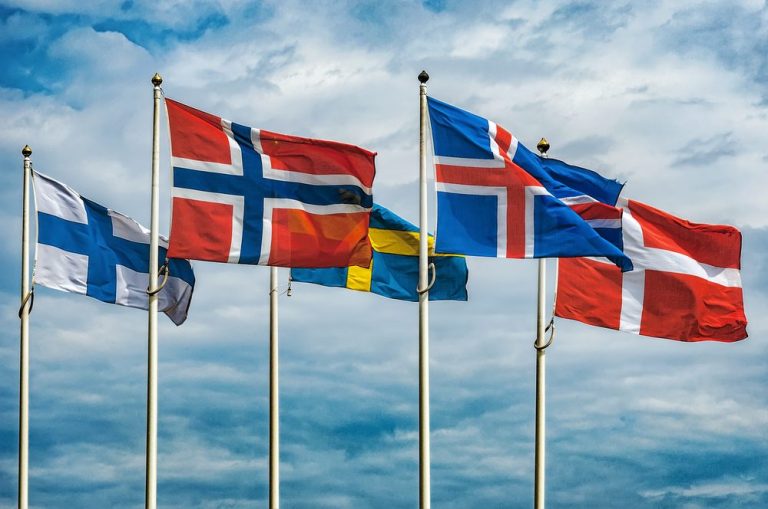How Nordic Payments Megastructure Can Drive Greater Regional Integration, Harmonization

From Europe’s first banknotes, issued in Stockholm in 1660, to the Danish government’s world-first abolition of paper bond certificates in 1980, the Nordic countries have long been at the vanguard of European payment and banking trends.
To consider a more recent development, Nordic countries were first introduced to mobile payments when six large banks in Sweden cooperated to launch Swish in 2012. The app linked bank account details to a phone number, and enabled consumers to transfer money in real-time.
The following year, Danske Bank introduced MobilePay in Denmark and Finland based on a similar premise, while Norway’s Vipps was launched to the public in 2015, quickly becoming the country’s most popular mobile wallet.
Related: Swish CEO: Nordic Consumers Demand Local Merchants Improve Mobile Commerce Experience
Part of the reason Vipps, MobilePay and Swish have been able to ascend to predominance in their native markets is that from the get-go, all three were backed by the countries’ biggest banks as well as the respective central banks and clearing houses.
See also: Vipps CEO: Intense Competition From Big Techs Keeps Nordic Payment Firms On Their Toes
And although interbank collaboration on digital infrastructure is not unique to the Nordics, countries in the region have traditionally been ahead of the curve when it comes to the cross-border nature of this collaboration.
To date, the collaboration is still strong among Nordic financial institutions, even extending to those that get called “challengers” or “disruptors.” As Ken Villum Klausen, CEO and founder of the Danish neobank Lunar, told PYMNTS, their ambition is not to build everything on their own at all times, and that to deliver a better product to customers, a partnership is always preferable to going at it alone.
Toward Payments Harmonization
As of June 2021, it was announced that MobilePay, Vipps, and Finland’s Pivo will merge to create a new joint wallet and cross-border payments network. Once approved by the European Union’s competition authorities, the merger will set the stage for greater integration within the Nordic payments ecosystem and beyond.
Read more: Nordic Banks Strike Deal To Merge Three Mobile Payments Apps
With the consolidation of payment solutions breaking down barriers in these northern European countries, the rest of the continent is soon to follow in the Nordics’ footsteps — as has often been the case in the history of European payments.
When PYMNTS spoke to Vipps’ CEO Rune Garborg earlier this year, his view was that the combined payment solution will be the “strongest wallet in Europe,” enabling the firms to expand their reach beyond the small nations of Norway, Denmark and Finland.
It is worth acknowledging that important strides have already been made in unifying payments and reducing payments friction across Europe, the most notable being the implementation of a single euro currency and the establishment of the Single Euro Payments Area (SEPA).
But there is still work to be done.
As Claus Bunkenborg, CEO of MobilePay, told PYMNTS, “Even though European regulators want to harmonize payments in Europe, there are still a lot of obstacles that we need to overcome before we can easily enable cross-border payments.”
Related: Nordic Mobile Wallets Must Collaborate to Fend off Competition From Global Players
Nordicwide, Europewide … Worldwide?
The good news is that pan-Europeanism and pan-Nordicism are wholly compatible.
Consider the latest collaborative endeavor between Sweden, Finland, and Denmark — the P27 real-time payment network. From inception, P27 was designed with Europewide integration in mind. Because Finland uses the euro and all Nordic nations belong to the SEPA, interoperability with EU-driven frameworks like TIPS will be essential to the project’s success.
Of course, there are still hurdles to be overcome. Having initially been on board, Norwegian banks have pulled out of the P27 initiative, somewhat dampening its pan-Nordic ambitions. That being said, Norwegian apathy on P27 hasn’t affected the Vipps-MobilePay merger and P27 banks still have a large footprint in the country.
Regardless of the occasional political roadblock, up and down the continent, businesses and consumers are demanding seamless cross-border payments in real time. Governments and banks recognize the need for compatibility between neighboring infrastructures if this vision is to be achieved.
See also: Deep Dive: How Emerging Digital Payment Options Impact Cross-Border Customer Experience
What’s interesting about the rising megastructure is that it isn’t an EU project. While Norway and Iceland are closely aligned with the bloc, their status as non-members proves that collaboration on infrastructure needn’t be orchestrated by Brussels.
Even more enticing from an international perspective is that ISO 20022, the standard at the center of efforts to upgrade Europe’s payment rails, is international in its scope.
Read more: The Clearing House Stays on Schedule for ISO 20022 Implementation in Nov. 2023
For the Nordic mobile wallets, one challenge comes in the form of the rising popularity of NFC contactless payments. While Vipps, MobilePay and Swish remain dominant in the field of peer-to-peer and eCommerce payments, when it comes to in-store purchases, the QR-code and Bluetooth-based apps have to compete with the alternative mobile technology, where American Big Tech takes the lead.
In the end, there’s space and need for multiple payment methods in all countries. As the new European payments system emerges from a coalition of national and international initiatives, mobile wallets will find their place among an assemblage of financial technologies that demand collaboration between all stakeholders.
While Europe’s halls of power might resist the influence of Big Tech and U.S. card networks, they too need to be part of the conversation if the continent is to realize its dream of the frictionless flow of money across borders.
For all PYMNTS EMEA coverage, subscribe to the daily EMEA Newsletter.